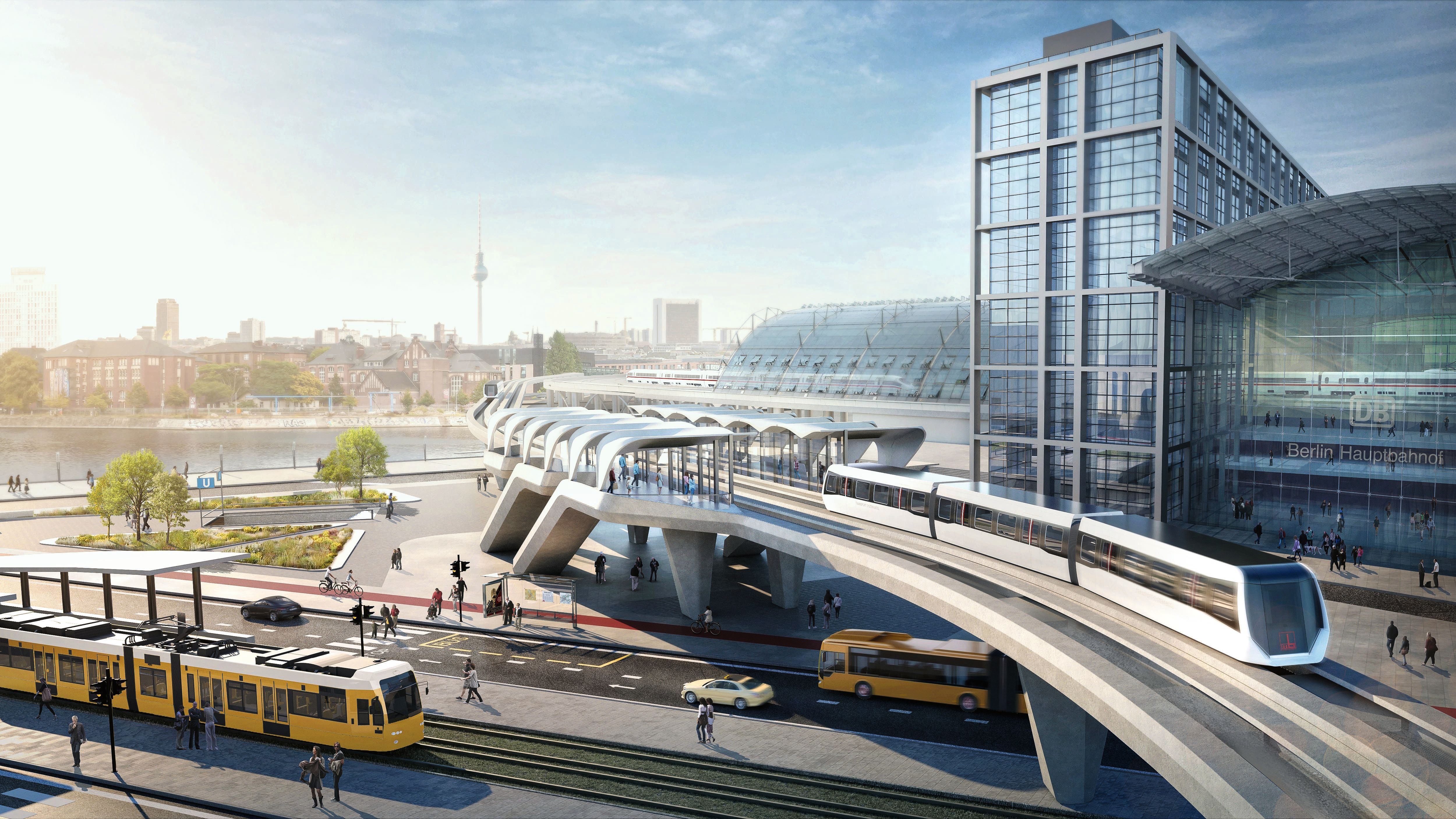
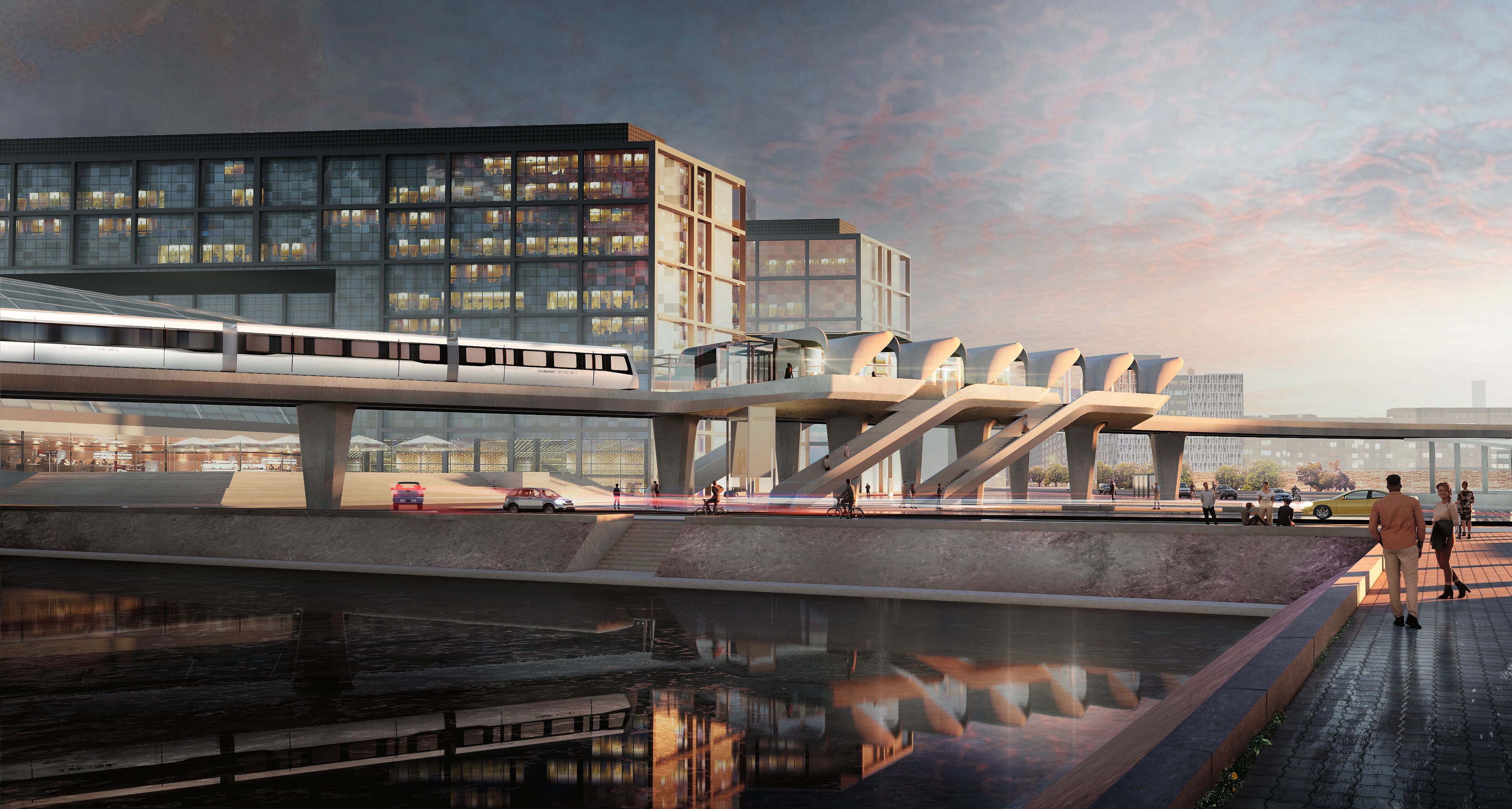
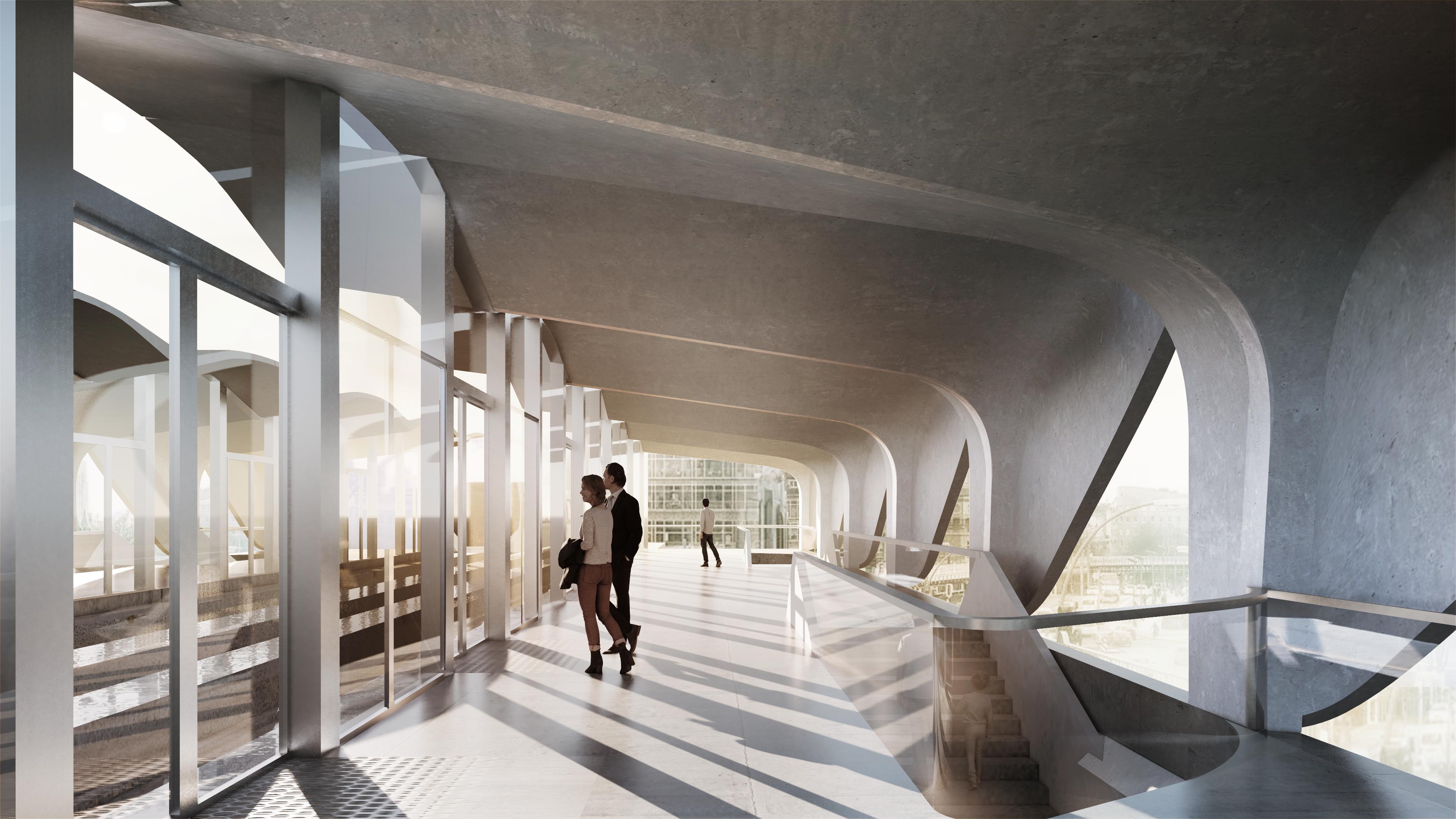
Maglev rail systems can provide the future of public transport in both urban and rural regions, offering reliable, high-capacity solutions with low-noise, low-emission, electric-powered operation. GRAFT has devised an innovative design concept for the tracks, struts, and stations of the Transport System Bögl (TSB), the market-ready maglev technology developed by the Max Bögl group, enabling it to be better integrated into the surrounding environment.
Conceived as a multifunctional infrastructural element, the track sections not only serve to carry the train but can also be equipped with solar panels or planters.
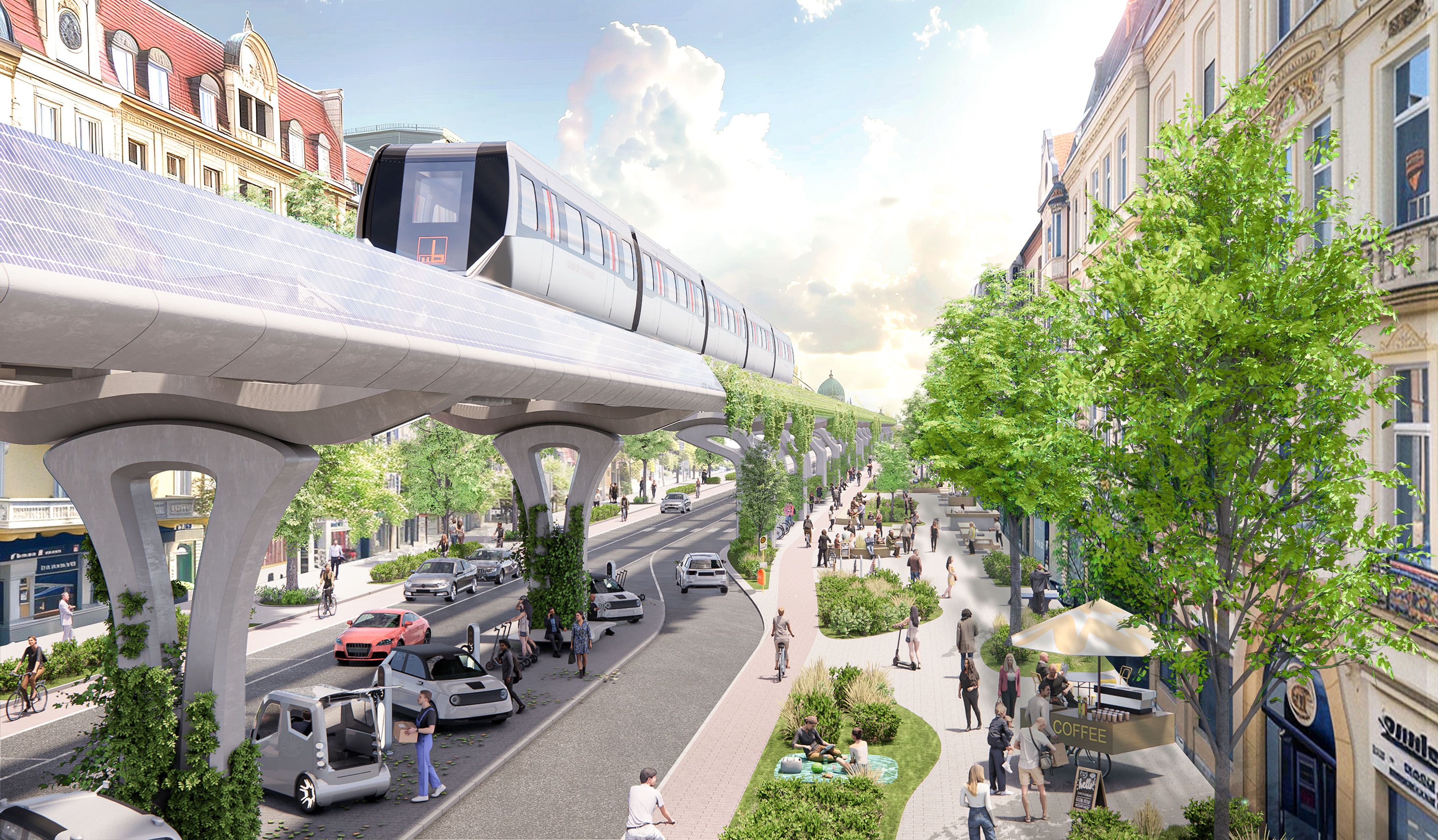
Employing photovoltaic technology would turn the track into an inner-city power plant, generating up to 43% of the energy required and creating an efficient symbiosis between the two systems.

The elevated, intersection-free construction minimizes the creation of impervious surfaces within the increasingly dense urban environment and reduces conflict between different horizontal modes of transport.

Featuring serial production and modular assembly through the different sections, GRAFT’s design endows the system with a highly distinctive visual language. The standard strut will form a unique sculptural element that can be employed in various load-bearing configurations according to the specific urban context.
A similar modularity will also be evident in the system’s stations, where a specially designed curved roof component will enable the creation of intelligent, functional spaces of varying dimensions. This contoured roof section will become a unifying feature, recurring in numerous configurations and informing the outward appearance of the different stations.

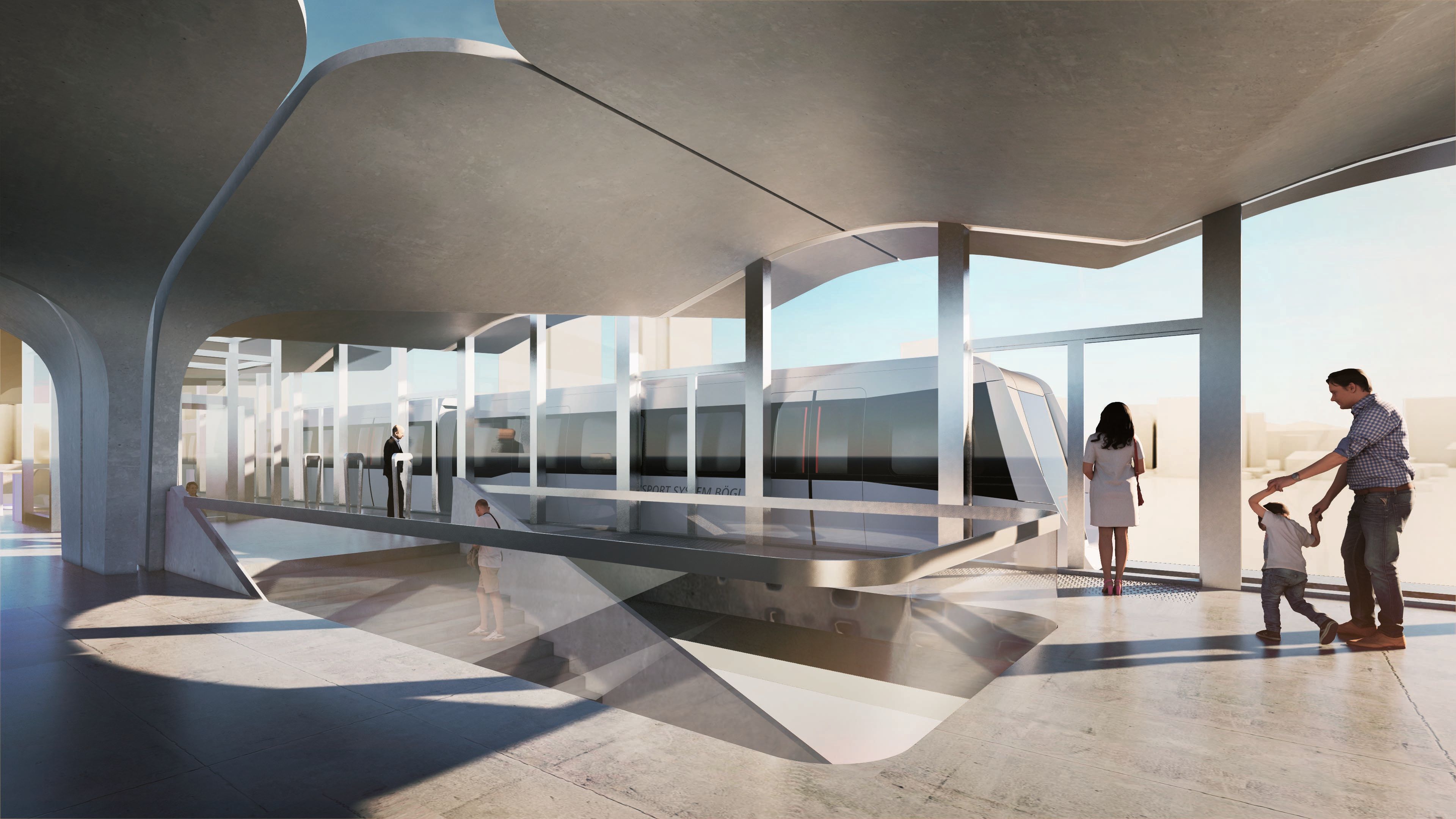

Due to its self-supporting technology, the TSB can be employed in many sites and settings around the world. In addition to its designs for TSB stations, GRAFT also proposed a fictional yet feasible maglev network for Berlin, connecting locations that would offer huge potential in the development of the city – Hauptbahnhof, the Charité hospital, the Charité Campus Virchow Klinikum, and the new TXL Urban Tech Republic at the former Tegel Airport. Connecting the two central locations of Charité Mitte und Charité Virchow would enable the formation of a joint campus in which patients, employees, researchers, and materials could be transported quickly and easily.